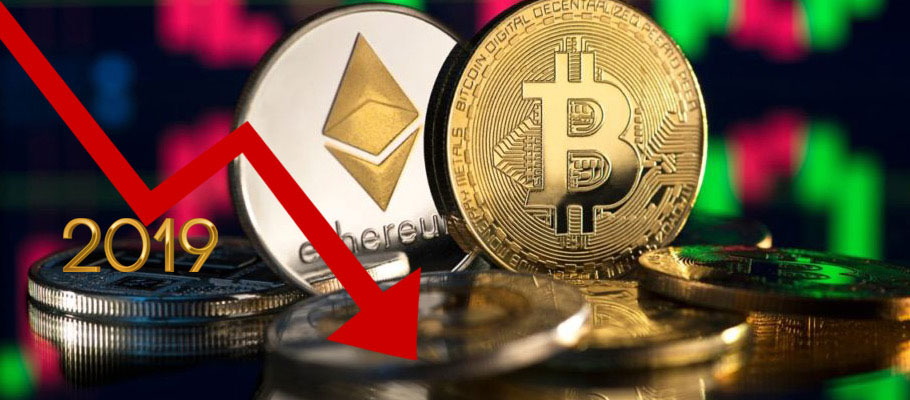
Published: September 6th, 2023
New data from crypto analytics firm CoinGecko show that Bitcoin's spot trading volumes for the third quarter of 2023 have totaled just above USD 720 billion to-date. That puts BTC on track for its lowest quarterly trading volume since Q1 2019.
Between 2019 and Q2 2023, quarterly trading volumes were close to USD 2 trillion. Unless Bitcoin undergoes a major surge in September, the Q3 2023 figure will be significantly lower than that.
In July and August 2023, Bitcoin saw trading volumes of USD 345 billion and USD 354 billion, respectively. If September's volumes come in at a similar level of around USD 350 billion, quarterly trading volumes would reach around one trillion USD.
In the first quarter of 2019, CoinGecko says the trading volume for Bitcoin was USD 541 billion.
Number two coin Ethereum (ETH) is experiencing similar market conditions. In July and August of this year, ETH posted trading volumes of USD 232 billion and USD 212 billion respectively.
If Ethereum’s September volumes come in at roughly USD 220 billion, the total quarterly trading volume will tip just above USD 650 billion. As with BTC this would mark a low point not seen since 2019.
In Q4 2019, ETH’s total spot trading volume came in at USD 740 billion. A 2022 CoinGecko report tracked a 43 per cent drop in overall spot trading volumes for the crypto market in the second quarter of 2022.
In January 2023, following crypto’s extended 2022 bear market, a report from blockchain analytics firm Glassnode said that Bitcoin traders (and miners) were once again finding themselves in profit territory.
The firm's analysts said Bitcoin's realized price, or the average price investors were paying for BTC, had risen to roughly USD 19,600. For the previous 150 days, BTC’s average price had been USD $18,000. In both scenarios, crypto’s top coin was officially ‘back’, and trading in profit territory with prices above USD 21,000.
BTC rallied above the psychologically important USD 20,000 level on Saturday 14th January. It was the first time since the implosion of troubled crypto exchange FTX. At that level it became profitable for mining firms to switch their expensive ASIC machines back on and start validating transactions again on the Bitcoin network. The 20k level also meant the average Bitcoin hodler could make a profit if they liquidated their BTC holdings.
Miners were relieved, Glassnode said, that the economics of mining BTC had shifted back in their favour. Mining BTC requires robust computational power to solve complex math equations and create more Bitcoin. Mining one new Bitcoin currently costs about USD 18,700. When Bitcoin trades above that level, it means there is an opportunity to turn a profit.
BTC's price shot upward again in January 2023 after news that US inflation started to cool off. The Federal Reserve raised its benchmark rate repeatedly in 2022 to keep record-high inflation at bay. The extended effect was to bring down the price risk assets, impacting both traditional equities and Bitcoin.
At the time of Glassnode’s report, the Fed had just raised interest rates in December by another 50 basis points. This was seen as a more cautious rise compared to previous 75 basis-point hikes. The US Bureau of Labor and Statistics had recently published a Consumer Price Index report which showed that inflation had dropped back to 6.4 pe cent, down from 7 per cent seen in November.
Those figures spurred investor confidence, renewing hopes that the Fed was on track to soften what had been a ‘hawkish’ policy direction on rates.
Even before this year’s return to better times, the crypto market had experienced brief periods of calm. In October 2022, blockchain data firm Kaiko released figures showing that BTC's 20-day volatility had tracked the NASDAQ for the first time in nearly 24 months.
It was an unexpected swapping of roles, where Bitcoin’s price stayed more or less the same since the beginning of September. The normally stable NASDAQ and the S&P 500 had dropped by 12 per cent and 11 per cent respectively in the same period.
Bitcoin’s price has historically been correlated with technology stocks, though with a higher ‘beta’ (propensity for volatility) than other financial assets. Despite the impressive gains posted in 2021, its high beta rating has kept many investors from relying on it as safe-haven asset. Despite a price plunge in June, BTC and other major cryptos have been some of the best-performing assets in Q3, after the mighty Greenback.
Bitcoin’s price did drop back to lows last seen in 2020 during the week commencing 10th October, after core US inflation topped another 40-year high. Both BTC and equities fell on the news, before quickly bouncing back to their previous ranges.
The previous plunge seen in June 2022 followed the release of American inflation data for May, which showed consumer prices rising at a burning hot rate of at 8.7 per cent. Investors saw it as a sign that the Federal Reserve wouldn’t be altering its aggressive policy course any time soon, prompting a risk-off move that shifted money away from riskier assets.
However, while high inflation held firm for much of 2022, crypto’s price action stayed relatively stable with subsequent updates to the consumer price index (CPI) inflation measure. Stocks, on the other hand, have been in a slow-but-steady decline.
BTC’s stability was all the more notable given the hawkish stance taken by central banks worldwide, which have turned many bonds into an opportunity for rapid gains. As Reuters reported in September, Fed policy has sent bond yields skyrocketing.
Blockchain analyst Will Clemente noted in an October blog that Treasury market volatility has been much higher than Bitcoin volatility in the third quarter. At the time, volatility in stock prices hit all-time highs when compared to price moves for Bitcoin.